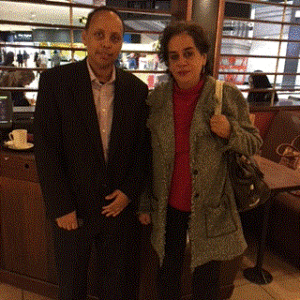Editor’s Note: Rasna Warah, a Writer and Photojournalist, is a Kenyan of Indian decent and the author of numerous books including Mogadishu Then and Now (2012), and her most recent book, UNsilenced: Unmasking the United Nations’ culture of cover ups, corruption and impunity (2016). WardheerNews had an in depth interview with Rasna about her books and her interests about Somalia. Abdelkarim Hassan conducted the interview for WardheerNews.
—————-
WardheerNews (WDN): Rasna Warah, we are delighted to welcome you to WardheerNews.com. Before we delve into the bulk of the interview, could you please share with our readers a brief background about yourself?
Rasna Warah: First, I would like to thank WardheerNews for the opportunity. I am a Kenyan of Indian descent. I was born in Nairobi but now live in the coastal town of Malindi with my retired husband. For about a decade, I worked as an editor and writer at the United Nations Human Settlements Programme (UN-Habitat). I write a column for the Daily Nation, Kenya’s leading newspaper. I have also written five books, two of which are on Somalia.

WDN: When did you first realize you wanted to be a writer, and who are some of the authors that have inspired you and what are the most challenging parts of writing a book (s)?
Rasna Warah: As a writer I have been inspired by writers who have challenged the status quo and introduced ideas that have had a revolutionary impact on their societies. My all-time favorite author is James Baldwin who dissected race relations in the United States in a profound and meaningful way. I also admire Ngugi wa Thiong’o, who helped me understand the devastating psychological impact of colonialism on African societies. When I was a young woman, I was influenced by writers such as Nawal el Saadawi, whose book The Hidden Face of Eve had a real impact on me, and the American author Marilyn French, a pioneer in the feminist movement. Among the younger, newer writers, I have been impressed with Arundhati Roy’s deep intellectualism. I have recently also become a fan of Elif Shafak, a Turkish writer whose novel The Forty Rules of Love is an ode to the Sufi saint Rumi.
I am a writer of non-fiction, so for me the biggest challenge is always the research, which takes the longest time. So, for example, my book War Crimes was the culmination of more than two years of research. Once I have done the research, the task of writing doesn’t take me very long. War Crimes, for instance, took me about two months to write.
WDN: You have immense interest to write about Somalia as you have written many books and articles about Somalia. What led you to write about the complex issues of Somalia and where does your interest originate?
Rasna Warah: I had no interest in Somalia until I visited Mogadishu, quite by accident, in November 2011. When I got there and saw the scale of destruction in the city, I realized that there was a story about Somalia that was not being told. I saw all these once-beautiful buildings and wondered why it was that no one talked about the vibrant urban culture that characterized Mogadishu in the 1950s and ‘60s and even earlier. In the public imagination, Mogadishu was this wild and violent wasteland, and yet there were once cinemas, parks, cathedrals, theatres and football stadiums there. Why, I wondered, had few journalists reported that one of Africa’s most historic cities had been so utterly destroyed? How had Somalis and the world allowed this level of destruction and devastation to continue for more than two decades? When I came back to Nairobi, I met several Somalis who had lived in Mogadishu during the pre-civil war era who told me of all the good times they had in the city when they were growing up. The book Mogadishu Then and Now was a result of that first visit.
Another reason why I felt I needed to tell the Somalia story was because I was very disappointed with how the Kenyan media was reporting the country, especially after Kenya invaded southern Somalia in 2011. There was no nuance in the reporting, and very little understanding of Somalia’s history. After the Al-Shabaab terrorist attack on the Westgate mall in Nairobi, Kenyans became infected with Somaliophobia. People, including some journalists, started using the words “Somali” and “terrorist” interchangeably, and yet many of the Al-Shabaab terrorists who have struck terror in Kenya have been non-Somali Kenyans.
READ MORE: WDN INTERVIEW WITH AUTHOR RASNA WARAH
WardheerNews
We welcome the submission of all articles for possible publication on WardheerNews.com. WardheerNews will only consider articles sent exclusively. Please email your article today . Opinions expressed in this article are those of the author and do not necessarily reflect the views of WardheerNews.
WardheerNew’s tolerance platform is engaging with diversity of opinion, political ideology and self-expression. Tolerance is a necessary ingredient for creativity and civility.Tolerance fuels tenacity and audacity.
WardheerNews waxay tixgelin gaara siinaysaa maqaaladaha sida gaarka ah loogu soo diro ee aan lagu daabicin goobo kale. Maqaalkani wuxuu ka turjumayaa aragtida Qoraaga loomana fasiran karo tan WardheerNews.
Copyright © 2024 WardheerNews, All rights reserved


